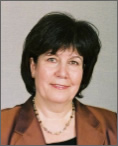Integrated Project Delivery Spawns Innovation – A Case Study
 SEMM SEMINAR
SEMM SEMINAR
This seminar is sponsored by the Pacific Earthquake Engineering Research Center
Simin Naaseh, S.E., President & CEO
Forell/Elsesser Engineers, Inc.
Monday, November 8, 2010
12:00-1:00 pm in 502 Davis Hall
Related Files
- – semm_simin_naaseh.pdf (37.6 MB)
- – semm_simin_naaseh/042409 UCSF IRMB UPLIFT RESTRAINT TAPE 2 HIGHLIGHTS.AVI.wmv (7.5 MB)
- – Animation_01.avi (29 MB)
- – Animation_02.avi (35.5 MB)
- – Roller Animation.avi (60 MB)
Abstract: The recent trend in the A/E/C Industry is a more integrated way to deliver construction projects, as own-ers recognize the added value of such an approach in both increased quality and reduced cost of their project. This approach, formally known as IPD (Integrated Project Delivery), requires deeper and more comprehensive understand-ing of design and construction issues by all team members. IPD is about developing skills, aptitudes and an under-standing of a project as a whole. Architects, engineers and contractors of the future will need to develop an apprecia-tion of all team members’ challenges and concerns, and learn how to be active participants in collaborative problem solving. One of the most positive benefits of IPD is that it fosters innovation as it brings about the best collective think-ing of all team members.
This presentation will use the University of California San Francisco’s Regeneration Medicine Building (RMB) as a case study to provide real world example of how value was increased and design enhanced through the application of the IPD Principles. UCSF selected the Design-Build team of DPR Construction, SmithGroup Architects and Fo-rell/Elsesser Engineers through a competition process that encouraged innovation, to design and construct a building originally conceived by Rafael Vinoly Architects. The team was challenged by the University to retain the original net square footage and design integrity while finding $20M in cost savings. Innovation and cost savings were achieved through an integrated approach and by carefully analyzing every aspect of the building design and construction process. Collectively, the team was able to provide exceptional results and solve multiple challenges related to budget, schedule, seismic performance, site stability, and construction logistics, while adhering to the University’s budget. In this process, an unprecedented seismic uplift restraint device was invented, tested and implemented – a process that would not have succeeded in the context of a more traditional project delivery method.
Speaker: Simin Naaseh is the President and Chief Executive Officer of Forell/Elsesser Engineers with over twenty nine years of experience in the structural engineering field. She has served as the President of the Structural Engi-neers Association of Northern California and as member of several boards and advisory panels. Currently, she serves as a member of the OSHPD Hospital Building Safety Board. She is an Allied Member of American Institute of Archi-tects (AIA) San Francisco Chapter, where she has been active on both the AIA Health Facilities Committee and the AIA Integrated Project Delivery Committee. Simin is well recognized for her experience in the implementation of inno-vative seismic design technologies, such as base isolation. She has lectured internationally, sharing her knowledge of structural and earthquake engineering and the use of energy dissipation mechanisms to minimize seismic damage to buildings. She has also written numerous reports and papers regarding her structural engineering expertise with seismic design and earthquake protection issues.
Please consult the seminar web page for future updates: http://www.ce.berkeley.edu
posted October 29, 2010

